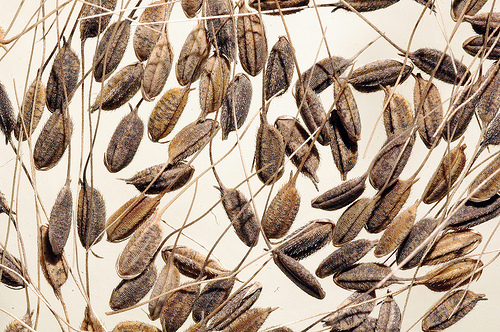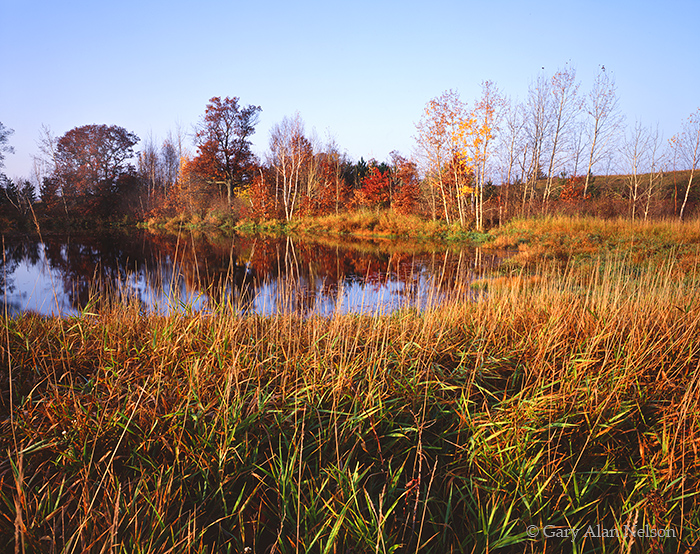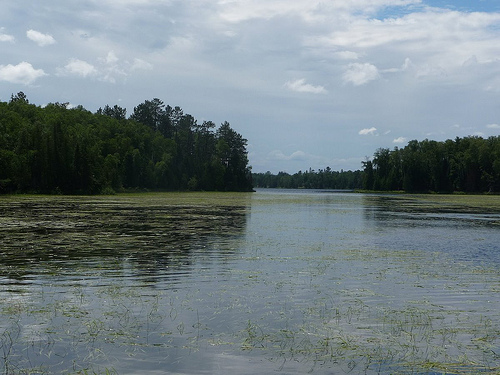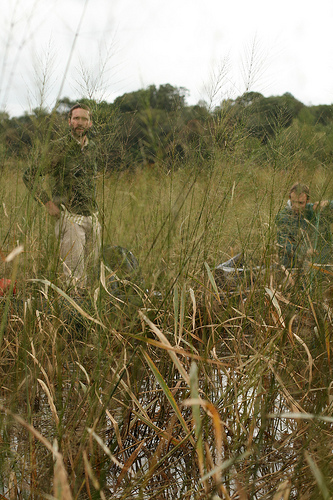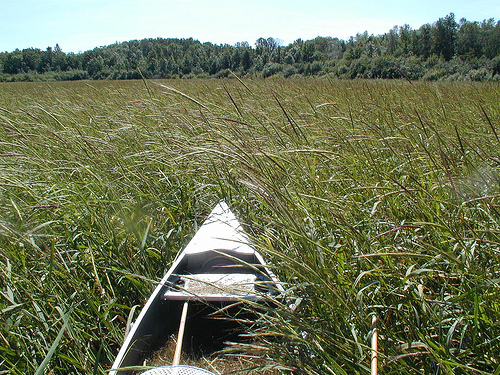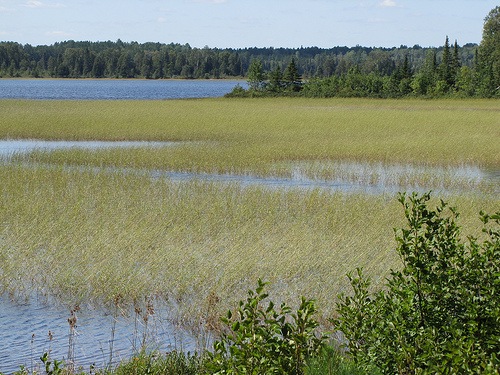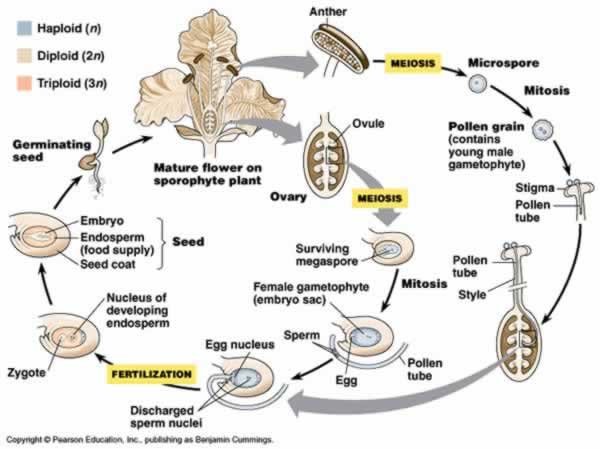Reproduction
1) Rice kernels are released from parent plant at the end of summer. They are either knocked down by the wind, animals, or harvesters. |
Image from flickr.com. Some rights reserved by user IRRI. |
2) They fall into the water like a spear and stop in the mud below barely out of sight. They remain there the duration of the winter if they aren't consumed by animals or washed away. |
The photograph above is property of Gary Alan Nelson. You may purchase this print or others of his at his website http://www.garyalannelson.com/ |
3) In the spring, about half of the seeds send roots into the muddy substrate and begin to grow (see adaptations to learn why). |
|
| 4) "Submerged State"- The seedlings produce narrow, long leaves which then grow upwards until they reach the surface of the water. | |
| 5) "Floating Stage"- In June the leaves will form a mat which floats on the water's surface to increase their sunlight exposure. These mats can grow to be 2 to 3 feet across. |
Image from flickr.com. Some rights reserved by user Greg Seitz. |
| 6) "Emergent Stage"- This is when the plant develps an upright stalk. In approximately 4 or 5 weeks they will reach their full height of anywhere from 2 to 10 feet. | |
| 7) In August the stalk produces a flower spike or panicle which can grow to lenghts of 2 feet. The female flowers grow towards the top while the male flowers grow lower on the stalk. During this time the flowers blossom with the female flowers opening a few days before the male flowers on the same plant. Read about the significance of this in adaptations. |
Image from flickr.com. Some rights reserved by user dogtooth77. |
| 8) After fertilization occurs, a few weeks later the seeds begin to ripen. Generally the seeds towards the top of the stalk reach maturity before the lower ones. The peak of this ripening is from about August 25th to September 5th. It is during this time that the grains are harvested by people in canoes. (Thayer, 2006) |
Image from flickr.com. Some rights reserved by user esagor. |
Image from flickr.com. Some rights reserved by user Superior National Forest. |
Conditions Required For these stages of growth to occur, the conditions must first be suitable. Sufficient levels of iron, manganese, nitrogen, phosphorous, potassium, and sulfur must be present. These are generally provided with water flow or flooding. The seeds are able to germinate at about 42°F but the prime temperature range is between 64 °F and 70 °F. The water pH range which supports growth is between 5.0 and 8.0 (Oelke et al 1992). |
An Angiosperm's Life Cycle
|
The picture to the left shows the generalized life cycle of an angiosperm (see classification). Though wild rice has some varied morphological features, it goes through the same cycle. |
Next, learn about wild rice's interactions with other organisms by clicking here.
To go back to the home page simply click the 'home' tab at the top of this page or click here
